| Druminnor castle | |
|---|---|
 | |
| Site history | |
| Built | 15th century |
Druminnor Castle is an L-plan castle, dating from the early 15th century, about two miles east of Rhynie, in a steep valley by the Keron burn, in Aberdeenshire, Scotland. [1]
| Druminnor castle | |
|---|---|
 | |
| Site history | |
| Built | 15th century |
Druminnor Castle is an L-plan castle, dating from the early 15th century, about two miles east of Rhynie, in a steep valley by the Keron burn, in Aberdeenshire, Scotland. [1]

In about 1271 Alexander III of Scotland granted land to Duncan Forbes in this area and there may have been a castle up the river from the present site. [1]
A second Druminnor Castle is thought to have been the original Castle Forbes. The original tower house, dated from 1456, was demolished in the early 19th century. It was described as "a square tower united to a half-square and which contains the staircase". [1]
The third castle, originally attached to the second tower, was built in 1440-70. [1]
The Gordon and Forbes families had a protracted feud, in the course of which twenty of the Gordons were murdered in the castle’s Great Hall in 1571. [2] Later that year a party from Clan Forbes was defeated by a party of Gordons at the battle of Tillieangus, Black Arthur Forbes, their commander, being killed by William Gordon of Terpersie, and the survivors being pursued to the gates of Druminnor Castle. This dispute arose after the Master of Forbes repudiated his wife, the daughter of the Earl of Huntly. [1]
In 1590 John, Master of Forbes was accused of imprisoning his father, William, Lord Forbes, in a chamber at Druminnor and hitting him on the head with the pommel of his sword. Two younger sons, Robert Forbes Commendator of Monymusk and James Forbes of Fechell brought their father's complaint to the Privy Council, but John Forbes denied it. The Council declared that Drumminor should be kept by William Forbes of Tolquhoun and others till Lord Forbes came to Edinburgh or sent further testimony. In May 1591 John Master of Forbes claimed that his brothers had turned his father against him, and while Lord Forbes was lying sick at Dundee they had entered and robbed the House of Druminnor. The younger Forbes brothers obtained royal letters against the Master of Forbes to support their occupation of Druminnor. [3]
Additions were made to the castle in 1841-43, under the plans of Archibald Simpson, but these were removed in a further restoration by Margaret Sempill-Forbes in the 20th century, initially with the guidance of Ian Gordon Lindsay. [1]

The L-plan castle has a modern door central in the north front. The basements are all vaulted. The Great Hall is on the first floor. [1]
The doorway arch, comprising five straight sections, is thought to be unique in Scotland. There is heavy corbelling carrying the circular stair tower, to the North-East, [4] squared out to create the watch room, [1] on the first floor. [4] There are gun loops which are wide-flanking. [1] The walls are intaken at the first floor level.[ clarification needed ] [4]
There are three armorial panels over the door. The south front is four storeys high because of the slope of the ground.
The 1815 wing which has now been demolished had pointed gables and three good dormer heads.
It is a category A listed building. [4]

Craigievar Castle is a harled castle or fortified country house 6 miles (9.7 km) south of Alford, Aberdeenshire, Scotland. It was the seat of Clan Sempill, and the Forbes family resided here for 350 years until 1963, when the property was sold to the National Trust for Scotland by the 19th Lord Sempill.
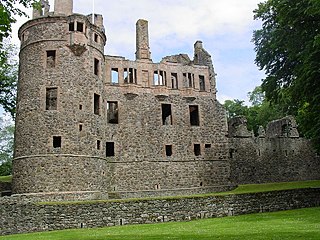
Huntly Castle is a ruined castle north of Huntly in Aberdeenshire, Scotland, where the rivers Deveron and Bogie meet. It was the ancestral home of the chief of Clan Gordon, Earl of Huntly. There have been four castles built on the site that have been referred to as Huntly Castle, Strathbogie Castle or Peel of Strathbogie.
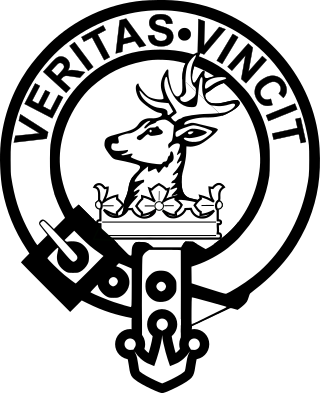
Clan Keith is a Highland and Lowland Scottish clan, whose Chief historically held the hereditary title of Marischal, then Great Marischal, then Earl Marischal of Scotland.

Clan Mackay is an ancient and once-powerful Highland Scottish clan from the far North of the Scottish Highlands, but with roots in the old Kingdom of Moray.
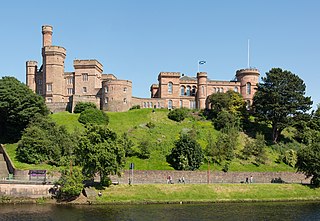
Inverness Castle sits on a cliff overlooking the River Ness in Inverness, Scotland. A succession of castles have stood on this site since 1057, although the present structure dates from 1836. The present structure is a Category A listed building.

Clan Gordon is a Highland Scottish clan, historically one of the most powerful Scottish clans. The Gordon lands once spanned a large territory across the Highlands. Presently, Gordon is seated at Aboyne Castle, Aberdeenshire. The Chief of the clan is the Earl of Huntly, later the Marquess of Huntly.

Clan Sutherland also known as House of Sutherland is a Highland Scottish clan whose traditional territory is the shire of Sutherland in the far north of Scotland. The chief of the clan was also the powerful Earl of Sutherland; however, in the early 16th century, this title passed through marriage to a younger son of the chief of Clan Gordon. The current chief is Alistair Sutherland, who holds the title Earl of Sutherland.

Edzell Castle is a ruined 16th-century castle, with an early-17th-century walled garden. It is located close to Edzell, and is around 5 miles (8 km) north of Brechin, in Angus, Scotland. Edzell Castle was begun around 1520 by David Lindsay, 9th Earl of Crawford, and expanded by his son, Sir David Lindsay, Lord Edzell, who also laid out the garden in 1604. The castle saw little military action, and was, in its design, construction and use, more of a country house than a defensive structure. It was briefly occupied by English troops during Oliver Cromwell's invasion of Scotland in 1651. In 1715 it was sold by the Lindsay family, and eventually came into the ownership of the Earl of Dalhousie. It was given into state care in the 1930s, and is now a visitor attraction run by Historic Environment Scotland. The castle consists of the original tower house and building ranges around a courtyard. The adjacent Renaissance walled garden, incorporating intricate relief carvings, is unique in Scotland. It was replanted in the 1930s, and is considered to have links to esoteric traditions, including Rosicrucianism and Freemasonry.

Dirleton Castle is a medieval fortress in the village of Dirleton, East Lothian, Scotland. It lies around 2 miles (3.2 km) west of North Berwick, and around 19 miles (31 km) east of Edinburgh. The oldest parts of the castle date to the 13th century, and it was abandoned by the end of the 17th century.
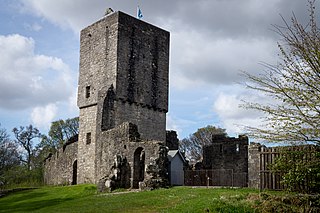
Mugdock Castle was the stronghold of the Clan Graham from the middle of the 13th century. Its ruins are located in Mugdock Country Park, just west of the village of Mugdock in the parish of Strathblane. The castle is within the registration county of Stirlingshire, although it is only 2 kilometres (1.2 mi) north of Milngavie, East Dunbartonshire, on the northern outskirts of Greater Glasgow.
James Murray of Kilbaberton, (d.1634), was a Scottish master wright and architect. He served as the King's Master of Works under James VI, and Charles I. He was one of the first men in Scotland to be called an architect.
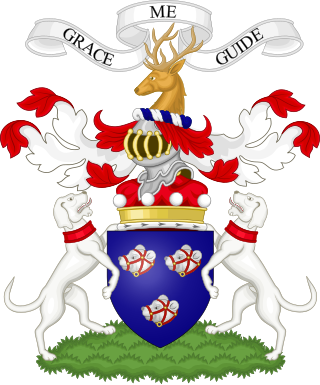
Clan Forbes is a Highland Scottish clan from Aberdeenshire, Scotland.
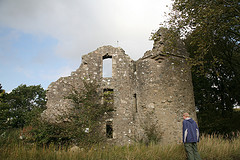
Esslemont Castle is a ruined tower house in Aberdeenshire, Scotland. It is located on the A920 west of Ellon and is designated a scheduled ancient monument.

The Palace of Holyroodhouse, commonly known as Holyrood Palace, is the official residence of the British monarch in Scotland. Located at the bottom of the Royal Mile in Edinburgh, at the opposite end to Edinburgh Castle, Holyrood has served as the principal royal residence in Scotland since the 16th century, and is a setting for state occasions and official entertaining.

The Marian civil war in Scotland (1568–1573) was a period of conflict which followed the abdication of Mary, Queen of Scots, and her escape from Lochleven Castle in May 1568. Those who ruled in the name of her infant son James VI fought against the supporters of the Queen, who was exiled in England. Edinburgh Castle, which was garrisoned in her name, became the focus of the conflict and surrendered only after an English intervention in May 1573. The conflict in 1570 was called an "internecine war in the bowels of this commonwealth", and the period was called soon after an "internecine war driven by questions against authority."
Laurence Oliphant, 4th Lord Oliphant (1529–1593) was a Scottish nobleman.
Gilbert Kennedy of Bargany and Ardstinchar was a Scottish landowner and murder victim. Kennedy had inherited a long-standing family feud with John Kennedy, 5th Earl of Cassilis, on the death of his father, Thomas Kennedy of Bargany. On 11 December 1601 he met the Earl and his followers at Pennyglen near Maybole and was murdered with a lance thrust in his back.
William Forbes, 7th Lord Forbes (1513-1593) was a Scottish landowner.
John Forbes, 8th Lord Forbes (1542–1606) was a Scottish aristocrat.
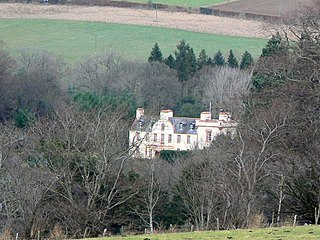
James Crichton of Frendraught or Frendraucht (1599-1667) was a Scottish landowner and survivor of the Fire of Frendraught in October 1630. Several of his guests were killed at Frendraught Castle and arson was suspected, though the facts of the case were widely disputed and remain unresolved.